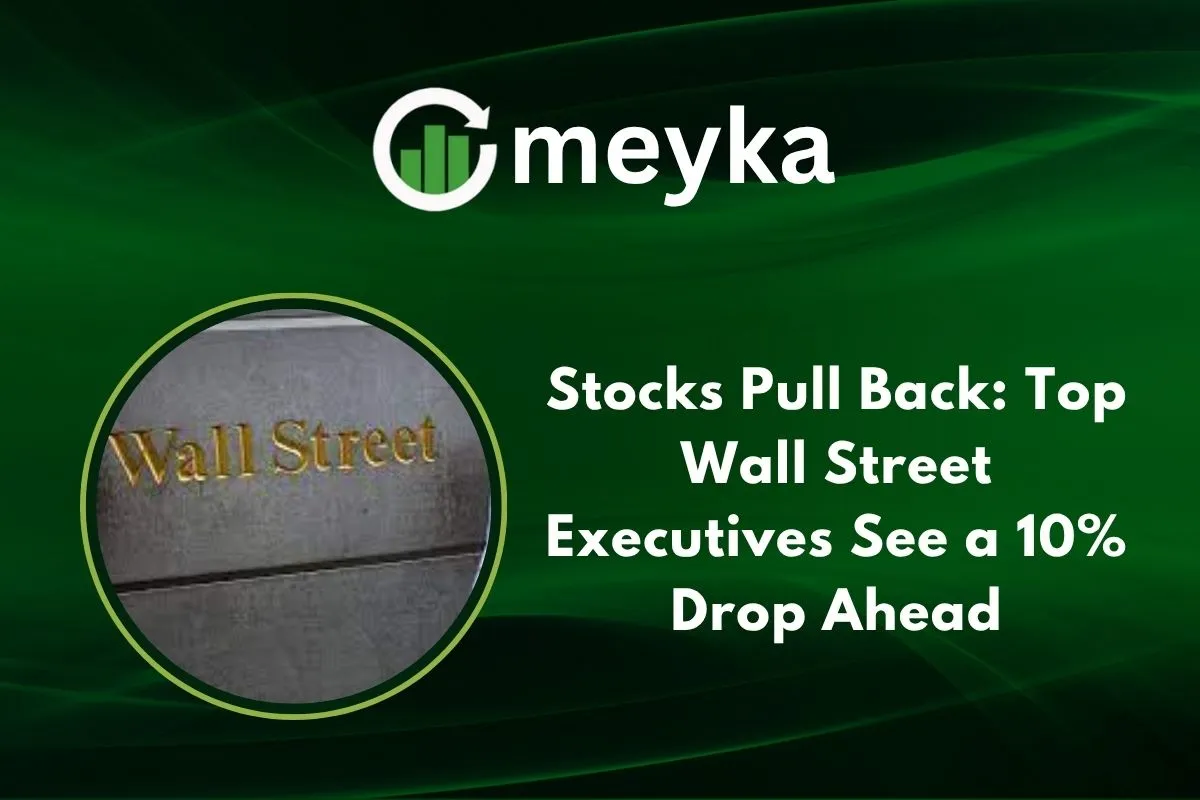Stocks Pull Back: Top Wall Street Executives See a 10% Drop Ahead
We’re seeing a shift in the markets. After a long run of gains, stock values are starting to slip. Now, major figures on Wall Street are warning that this drop could deepen, possibly by around 10 %. When bosses at large firms like Goldman Sachs, Morgan Stanley, and Capital Group raise red flags, it’s not just noise.
Their message: high stock valuations, fading economic momentum, and global uncertainty could combine to pull down the market. For investors, students, and anyone following the economy, this matters. A 10 % drop doesn’t just wipe out numbers on a screen; it touches retirement accounts, savings, job confidence, and business planning. We’ll explore what’s fueling the pullback, how likely it is, what it might mean for us, and how we can prepare.
Recent Stock Market Performance
Recently, key U.S. stock indexes have been under pressure. On October 10, 2025, for example, the S&P 500 and Nasdaq Composite suffered their largest single‑day drops since April, as trade tensions flared and stocks that had been soaring suddenly reversed course. Over the past few months, the indexes have been hitting new highs, driven by tech and artificial intelligence enthusiasm. Then came signs of cracks: weak reports, tariff threats, and concerns about earnings. The result: a market in which the momentum has shifted.
We’ve also seen major tech names slide. For instance, the Meta Platforms and Microsoft earnings stirred anxiety, pulling the broader market lower.
In short, after strong gains, the market is showing stress, with pullback risk rising.
Insights from Wall Street Executives
We’re hearing a clear tone from some of Wall Street’s top executives. Many warn that the market is fully valued and a correction is overdue. For example:
- Mike Gitlin of Capital Group said corporate earnings remain strong, but valuations are the challenge.
- Ted Pick (Morgan Stanley) and David Solomon (Goldman Sachs) echoed the idea of a 10‑15 % correction being “normal” after a long rise.
- Another perspective: According to one source, “investors should prepare for an equity market draw‑down of more than 10 % over the next 12 to 24 months.”
What this tells us: the warning isn’t just about one company, it’s about the entire market cycle. Executives are not necessarily saying there will be a crash; they’re suggesting a “healthy” pullback is likely. In other words, it may be less about panic and more about a reset.
Key Factors Driving the Market Pullback
Let’s break down the main factors behind the pullback risk.
Interest Rates and Inflation
When interest rates go up or stay elevated, borrowing costs rise. That cuts into company profits and investor enthusiasm. Also, if inflation stays sticky, the Federal Reserve might keep rates higher longer, adding pressure.
Economic Data
We’ve seen weaker job numbers, slower manufacturing, nd some signs of consumer stress. For instance, in August, the stocks slumped after a weak employment report and renewed tariff concerns. When growth is shaky, the risk of a downturn rises.
Geopolitical / Trade Risks
Trade policy can quickly shift sentiment. As noted, revived tariff threats between the U.S. and China triggered a major drop in stocks. Such external shocks can spark a broader pullback.
Corporate Earnings and Valuations
Even if companies report decent numbers, valuations matter. Many executives argue that the market is “between fair and full”, not cheap. When stocks are expensive, there’s less margin for error.
Investor Sentiment & Market Psychology
When everyone expects stocks to go up, markets tend to stall or reverse. According to research, when too many bulls dominate, the market is on the “cusp of a dip.” In plain language: when the mood is too positive, risk rises.
Together, these factors create a mix that could lead to a roughly 10 % correction, even if the broader economy remains stable.
Potential Impact on Investors
So what does all this mean for us?
A 10 % drop in the market isn’t trivial. For example, if your portfolio was worth $100,000, a 10 % fall means a $10,000 loss. That can hurt confidence, especially for people near retirement.
For younger investors, this may be a chance to buy on weakness, if we stay calm and strategic. For older investors, it’s a reminder to check allocations and have some defensive positions (cash, bonds, or low‑volatility stocks).
Here are some guiding points:
- Diversify: Don’t have all your eggs in one sector (e.g., tech).
- Maintain cash reserves: Having dry powder helps you act, not react.
- Stay long‑term: Corrections are part of the cycle; patience is key.
- Avoid panic selling: Exiting during a dip can lock in losses and miss the rebound.
In short, we don’t have to fear a 10 % drop. Instead, we can prepare for it and perhaps benefit.
Historical Context: Similar Market Pullbacks
Pullbacks of ~10 % are not rare. They often come after strong runs. For instance:
- In 2018, the S&P 500 dropped about 10 % in February after a long rally.
- In 2022, markets corrected over 10 % as inflation peaked and rates rose.
The pattern: rally → tension → pullback → recovery.
Studies show that after a 10‑15 % dip, markets often continue upward within 6‑12 months. So we can view such pullbacks as a reset, not just a setback.
Conclusion
To wrap up, stocks are pulling back, and many top Wall Street executives see a roughly 10 % drop ahead. The reasons are clear valuations, rising interest rates, softer economic data, and shifts in investor sentiment. For us, this pullback is a reminder that market corrections are normal and can offer opportunities if we remain calm and strategic. By staying diversified, focusing on long-term goals, and avoiding panic reactions, we can navigate this period wisely. While a dip may feel alarming, history shows that markets often recover, and thoughtful planning can turn short-term volatility into a chance for growth.
FAQS
In 202, the market is falling because of rising tariffs, threats of a global slowdown, and high interest rates that worry investors.
The stock market pulled back because company values were very high, economic signs got weaker, and people feared bad news ahead.
HHiHistoricallyrket drops about 10% roughly every one to one and a half years on average.
Disclaimer:
The content shared by Meyka AI PTY LTD is solely for research and informational purposes. Meyka is not a financial advisory service, and the information provided should not be considered investment or trading advice.






